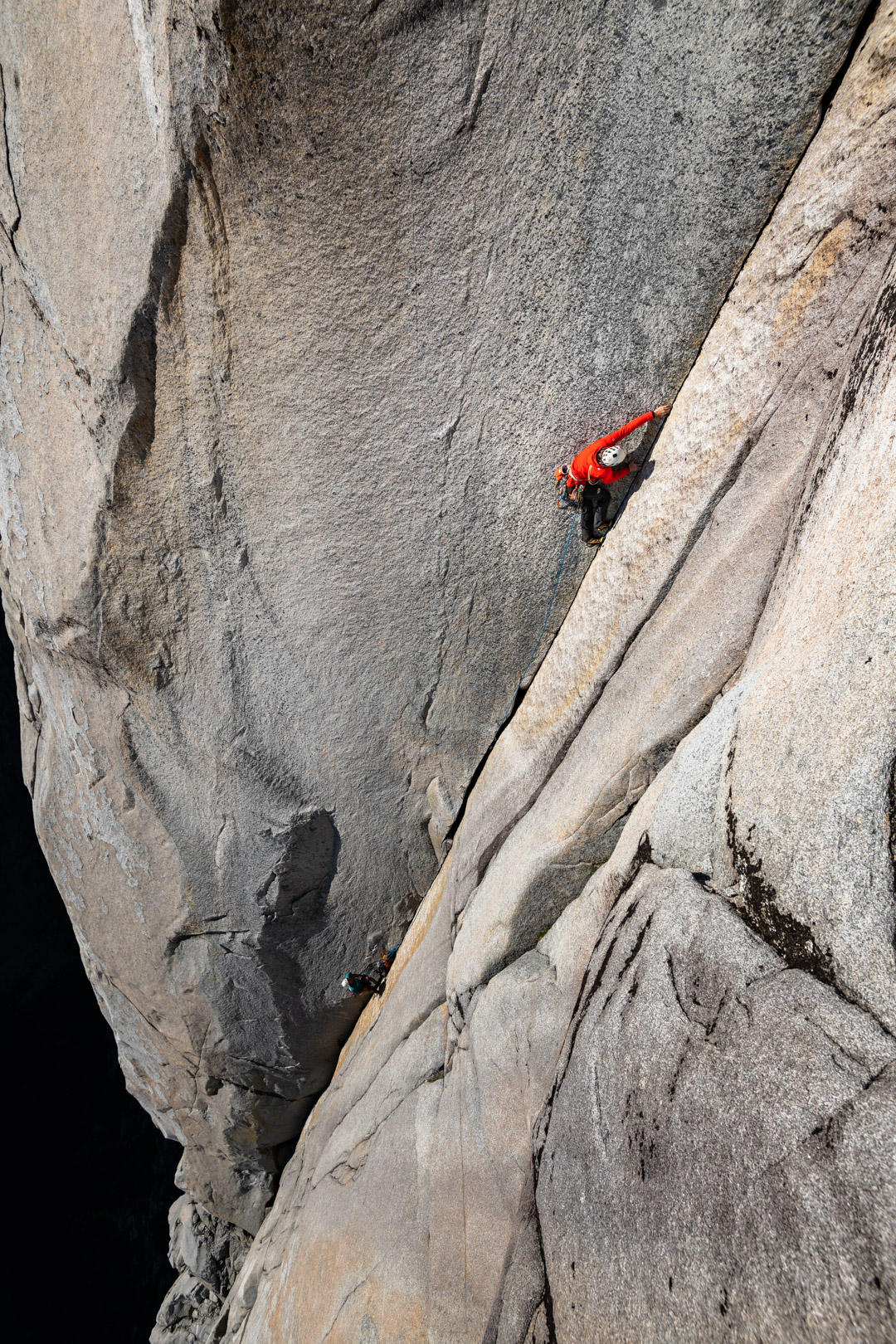Pared de la Plata: A big-wall first ascent in Northern Patgagonia
Chile, Palena Province, Valle de la Plata
Max Didier (Chile), Austin Siadak, Ian Siadak (both USA), and I had met the year before in El Chaltén and talked about doing an expedition together. In February 2020, it happened: We got ambitious, formed a team of friends, and set out to explore granite walls in Northern Patagonia. The result was a challenging expedition to Valle de la Plata, near Chaíten in Chile’s Palena Province.

Using Google Earth, Max had scouted some little-explored walls in a valley called Valle Alerce. We were searching for the full adventure: an unclimbed wall and time among friends in portaledges. Once there, we found Valle Alerce was wild and had lots of rock (see AAJ 2018). But it didn’t awaken the big-wall vibes in us, with too much jungle and maybe just not enough vertical. With a plan B in the back of our minds, we returned to civilization.
South of Valle Alerce is the Valle de la Plata, which leads up to a big wall called Serrania Avalancha, above Laguna de la Plata (43°10'07.5"S, 72°33'08.9"W). This wall was climbed by Mariana Gallego, Martin Molina, and Luis Molina in 2007 and by Sílvia Vidal in 2012. We committed to a look at this mythical face, which is reached from the small village Puerto Cárdenas. Just west of Puerto Cárdenas, it is possible to cross Río Frio, then hike cross country to the Río de la Plata and follow this to Laguna de la Plata. In all, the lake is located about 10km west of Puerto Cárdenas.

|

|
Gaucho Pierre Angelo helped us cross the Río Frio by horse on our first day. Reading Sílvia’s reports, we knew the approach wasn’t long, though through pure jungle and along wild rivers. After only one hour we encountered dense jungle and a steep river with lots of waterfalls. It was often impossible to walk in the riverbed. Five more challenging days followed. We spent days swinging our Bear Grylls–brand machetes, crawling on hands and knees, and wading through the river, sometimes deep and often with strong currents. Our original seven-day weather window vanished as we conquered more bamboo and river crossings. Simply reaching Laguna de la Plata seemed like a great aim in itself.
 Six days into our trip, we reached the lake. To our surprise, there was more than one wall rising there. Opposite the east-facing Serrania was a beautiful, white wall full of obvious crack systems. We called this west-facing wall Pared de la Plata. Though smaller, it was more appealing, and also looked less likely to turn into a raging waterfall in the rain. In 2014, Mike Sanchez, Juan Señoret, Cristobal “Tola” Señoret, and Sebastian Schmidt attempted a route on this wall, and our route shares the first couple of pitches before branching left.
Six days into our trip, we reached the lake. To our surprise, there was more than one wall rising there. Opposite the east-facing Serrania was a beautiful, white wall full of obvious crack systems. We called this west-facing wall Pared de la Plata. Though smaller, it was more appealing, and also looked less likely to turn into a raging waterfall in the rain. In 2014, Mike Sanchez, Juan Señoret, Cristobal “Tola” Señoret, and Sebastian Schmidt attempted a route on this wall, and our route shares the first couple of pitches before branching left.
We first spent eight days camping below the wall, and, over three climbing days (using aid and fixed ropes to make progress and return to base camp), we managed to reach the summit in very gray and unstable weather. Pitches 10 through 12 didn’t go free because of wetness, mud, and moss in the cracks (A2). Descending, we spotted a cleaner variation to the left of those pitches. We decided to leave static ropes fixed to pitch eight, an amazing pillar jammed into a big dihedral, hoping to try for an all-free ascent.
After one day of rain and waterfalls, we received a real five-day weather window. We quickly moved our camp onto the wall, to the top of what we called Puerto Pillar. These final two nights on the wall were for sure the high point of the trip—the contrast between the heavy rain and stable weather made us savor this wild place even more! Over one and a half days, we team-freed the new variation. Just one hand-drilled bolt was necessary to traverse left into another corner system on pitch 10. This was the beautiful free climbing we had been looking for.
Unfortunately, even with the nice weather, our weather window was closing. The long hike out of the valley would be made impossible by new rain and rising rivers. From our base camp below the wall, it took two full days—knowing the river crossings, the jungle path, and every single trick—to bring our loads back down to our starting point across the Río Frio.
This was a very committing expedition that I am happy to have shared with friends among whom I feel at ease and secure. The name of our route, Bailando con la Lluvia (“Dancing with the Rain,” 700m, 16 pitches, 7a), refers to the difficulty of climbing between the curtains of rain that turn these walls into raging waterfalls.
By Siebe Vanhee, Belgium



